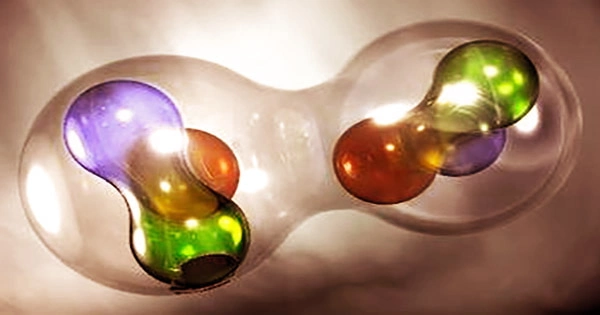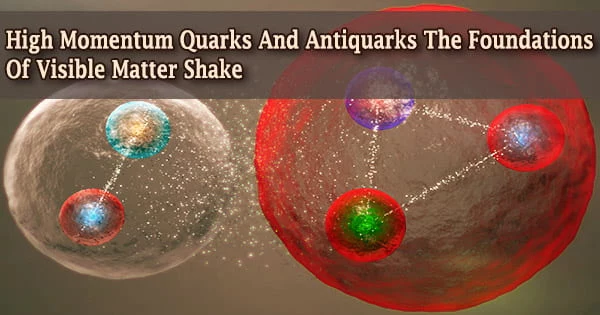Unexpected substructures in the underlying components of all matter have been revealed by two separate studies. Preliminary findings from a unique tagging method may shed light on the origins of the EMC effect, a long-standing nuclear conundrum. Meanwhile, following the recent discovery of asymmetrical antimatter in the proton, the authors will discuss the next steps.
During the 2021 Fall Meeting of the APS Division of Nuclear Physics, both groups will report their experiments at DOE’s Thomas Jefferson National Accelerator Facility and Fermilab.
One study adds to the body of knowledge on the EMC effect, which was discovered approximately 40 years ago by CERN researchers who discovered something unexpected: Quarks and gluons can be changed in the internal makeup of protons and neutrons bound in an atomic nucleus. However, it is uncertain why such changes occur or how to foresee them.
Scientists have quantified the EMC effect for the first time by labeling spectator neutrons, a key step toward understanding the riddle. The electric charges carried by quarks are less in magnitude than e, the size of the charge carried by an electron.
“We present results from a new transformative measurement of a novel observable that provides direct insight into the origin of the EMC effect,” said Tyler T. Kutz, a postdoctoral researcher at the Massachusetts Institute of Technology and Zuckerman Postdoctoral Scholar at Tel Aviv University, who will reveal the findings at the meeting.

Tagged spectator neutrons “split” the nuclear wave function into various portions inside Jefferson Lab’s Backward Angle Neutron Detector (BAND). The effect of momentum and density on the structure of bound nucleons is mapped in this process.
We present results from a new transformative measurement of a novel observable that provides direct insight into the origin of the EMC effect.
Tyler T. Kutz
To make protons and neutrons, the components of atomic nuclei, only two types of quarks are required. Other than protons and neutrons, up and down quarks can unite to generate other particles.
The researchers discovered large, unexpected consequences. The EMC effect appears to be linked to nucleon oscillations with high local density and momentum, according to preliminary data.
“The results have major implications for our understanding of the QCD structure of visible matter,” said Efrain Segarra, a graduate student at MIT working on the experiment. The research could shed light on the nature of confinement, strong interactions, and the fundamental composition of matter.
In a significant discovery published earlier this year in Nature, a Fermilab team discovered evidence that antimatter asymmetry also plays a key role in nucleon characteristics. According to new research, a single antiquark can account for nearly half of a proton’s momentum in the most extreme case.
“This surprising result clearly shows that even at high momentum fractions, antimatter is an important part of the proton,” said Shivangi Prasad, a researcher at Argonne National Laboratory. “It demonstrates the importance of nonperturbative approaches to the structure of the basic building block of matter, the proton.”
The positive pion is made up of an up quark and a down antiquark; the negative pion is made up of a down quark and an up antiquark; and the neutral pion is a quantum mechanical mixing of two states, with the bar over the top of the letter indicating the antiquark.
Prasad will speak on the SeaQuest experiment, which discovered that the proton contains more “down” antiquarks than “up” antiquarks. She will also provide early findings on the distributions of sea quarks and gluons.
“The SeaQuest Collaboration looked inside the proton by slamming a high-energy beam of protons into targets made of hydrogen (essentially protons) and deuterium (nuclei containing single protons and neutrons),” said Prasad.
“Within the proton, quarks and antiquarks are held together by extremely strong nuclear forces so great that they can create antimatter-matter quark pairs out of empty space!” she explained.
But the subatomic pairings only exist for a fleeting moment before they annihilate. The antiquark findings have reignited interest in numerous previous hypotheses for proton antimatter asymmetry. Prasad intends to talk about future measures that might be used to test the proposed procedures.





